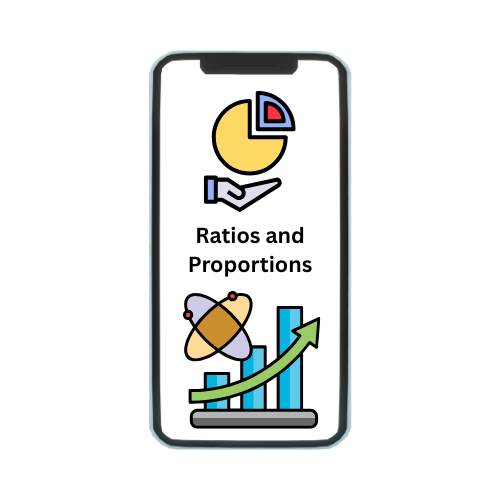The financial system is the backbone of any economy, comprising a complex network of institutions, markets, and intermediaries that facilitate the flow of funds between savers and borrowers. At its core, the financial system ensures efficient allocation of capital, promoting economic growth and stability. It includes institutions such as banks, insurance companies, and stock exchanges, which provide essential services like intermediation, payment systems, and risk management. Financial markets, such as the stock market and bond market, provide platforms for buying and selling financial assets, while financial instruments like stocks, bonds, and derivatives are crucial for transactions within the system. Regulatory frameworks oversee these activities, ensuring transparency, stability, and investor protection. Technological innovations, such as blockchain and artificial intelligence, are transforming financial services, enhancing efficiency, and accessibility. However, the system also faces risks, including systemic risks like market crashes and cybersecurity threats. Understanding the financial system is vital for navigating the complexities of global finance and ensuring sustainable economic development.
What Is a Financial System?
A financial system refers to the network of institutions, markets, and intermediaries that facilitate the flow of funds and financial transactions within an economy. It plays a crucial role in mobilizing savings from individuals and channeling them to borrowers, such as businesses and governments, who need capital to invest and grow. The key components of a financial system include financial institutions like banks, insurance companies, and stock exchanges, which provide essential services such as accepting deposits, offering loans, facilitating investments, and managing risks. Financial markets, such as the stock market and bond market, enable the buying and selling of financial assets, while financial instruments like stocks, bonds, derivatives, and commodities serve as vehicles for these transactions. Regulatory bodies oversee the financial system to ensure stability, transparency, and fair practices. Technological advancements, such as fintech innovations and digital currencies, are reshaping the financial landscape, making transactions faster, more secure, and accessible globally. Understanding the financial system is essential for individuals, businesses, and policymakers to make informed financial decisions and navigate the complexities of modern economies.
How Does a Financial System Work?
A financial system works through the interaction of various entities, mechanisms, and markets to facilitate the flow of funds and financial transactions within an economy. At its core, financial systems operate on the principle of financial intermediation, where financial institutions act as intermediaries between savers and borrowers. Savers deposit their funds in banks and other financial institutions, which in turn lend these funds to borrowers such as businesses and governments. This process helps to mobilize savings and allocate them to productive uses, such as investments in infrastructure, technology, and human capital. Financial markets, including the stock market, bond market, and money market, provide platforms for buying and selling financial assets, allowing investors to allocate their capital efficiently. Financial instruments such as stocks, bonds, derivatives, and commodities play a crucial role in these transactions, providing vehicles for investors to diversify their portfolios and manage risks. Regulatory bodies oversee the financial system to maintain stability, transparency, and fair practices, ensuring that financial institutions operate within legal and ethical boundaries. Technological advancements, such as digital payment systems and blockchain technology, have revolutionized financial services, making transactions faster, more secure, and accessible globally. Overall, the functioning of a financial system is essential for economic growth, as it facilitates the efficient allocation of resources and capital within an economy.
What Are the Key Components of a Financial System?
The key components of a financial system include institutions, markets, instruments, and regulations that work together to facilitate the flow of funds and financial transactions within an economy.
Institutions
Financial institutions are the foundation of the financial system. They include banks, insurance companies, pension funds, and regulatory agencies. Banks are crucial as they accept deposits from savers and provide loans to borrowers, thereby facilitating the flow of funds. Insurance companies and pension funds help manage risk and provide long-term financial security.
Markets
Financial markets provide platforms for buying and selling financial assets such as stocks, bonds, commodities, and currencies. Major financial markets include the stock market, bond market, money market, and foreign exchange market. These markets enable investors to trade securities, manage risk, and allocate capital efficiently.
Instruments
Financial instruments are assets that can be traded or transferred in financial markets. They include stocks, bonds, derivatives, and commodities. Stocks represent ownership in a company, while bonds are debt securities issued by governments and corporations. Derivatives, such as options and futures, are contracts whose value is derived from the performance of an underlying asset.
Regulations
Regulatory bodies oversee the financial system to ensure stability, transparency, and investor protection. They establish rules and guidelines for financial institutions and markets to operate ethically and responsibly. Regulations also aim to prevent fraud, market manipulation, and systemic risks that could destabilize the financial system.
Technological Advancements
Technological innovations, such as fintech and blockchain technology, are increasingly shaping the financial landscape. Fintech companies offer digital financial services, including mobile banking, peer-to-peer lending, and digital payments. Blockchain technology is revolutionizing transactions by providing a decentralized and secure method for recording and verifying financial transactions.
What Are the Main Functions of a Financial System?
The main functions of a financial system are crucial for the efficient allocation of capital, promoting economic growth, and ensuring financial stability within an economy.
Intermediation
Financial intermediation is one of the primary functions of the financial system. It involves financial institutions, such as banks and credit unions, that accept deposits from savers and lend these funds to borrowers. This process facilitates the flow of funds from those who have surplus funds (savers) to those who need funds to invest in productive activities (borrowers). Intermediaries play a vital role in evaluating creditworthiness, managing risks, and matching lenders with suitable borrowers.
Payment Systems
Payment systems are essential for facilitating transactions within the economy. They enable the transfer of money between individuals, businesses, and governments. Payment systems include methods such as checks, credit cards, and electronic funds transfers (EFTs). Efficient payment systems ensure that transactions are processed quickly, securely, and at low cost, which is critical for the smooth functioning of businesses and the overall economy.
Risk Management
Managing risk is another key function of the financial system. Financial institutions and markets provide tools and services to help individuals and businesses mitigate various risks. This includes insurance products to protect against unexpected events, such as accidents or natural disasters, and financial derivatives that hedge against fluctuations in interest rates, exchange rates, or commodity prices. Effective risk management strategies contribute to financial stability and reduce the likelihood of economic disruptions.
Capital Formation
Capital formation refers to the process of mobilizing savings and investing them in productive assets. The financial system plays a crucial role in facilitating this process by channeling savings into investments that contribute to economic growth and development. Capital formation is essential for funding infrastructure projects, technological innovations, and human capital development, which are critical for long-term prosperity.
Financial System Stability
Financial system stability refers to the ability of the financial system to withstand shocks and disruptions while continuing to function effectively. It is crucial for maintaining confidence in the financial system and preventing financial crises.
Importance of Stability
Financial system stability is essential for the overall health of the economy. A stable financial system ensures that financial intermediaries, markets, and institutions can operate smoothly, facilitating the flow of funds and investments. It promotes economic growth by providing a reliable environment for savings mobilization, capital formation, and investment.
Factors Affecting Stability
Several factors influence the stability of the financial system:
- Interest Rates: Fluctuations in interest rates can affect the profitability of financial institutions and the cost of borrowing for businesses and consumers.
- Inflation: High inflation rates can erode the value of money and impact investor confidence.
- Global Economic Conditions: Economic events and developments in other countries can have ripple effects on the domestic financial system.
- Regulatory Environment: Effective regulation and supervision are essential for maintaining financial stability by ensuring that financial institutions operate prudently and transparently.
Measures to Ensure Stability
To maintain financial system stability, policymakers and regulators employ various measures:
- Monitoring and Surveillance: Continuous monitoring of financial institutions and markets to detect potential risks and vulnerabilities.
- Capital Adequacy Requirements: Requiring financial institutions to hold sufficient capital to absorb losses and mitigate risks.
- Lender of Last Resort: Central banks act as lenders of last resort to provide liquidity to financial institutions during times of stress.
- Deposit Insurance: Guaranteeing deposits up to a certain amount to prevent bank runs and maintain depositor confidence.
Role of Regulatory Bodies
Regulatory bodies play a critical role in ensuring financial system stability:
- Supervision: Supervising financial institutions to ensure they comply with regulations and operate soundly.
- Risk Management Guidelines: Issuing guidelines on risk management practices to mitigate risks and enhance resilience.
- Crisis Management: Developing frameworks and procedures to manage financial crises effectively.
Impact of Stability
A stable financial system fosters investor confidence, encourages savings and investments, and supports sustainable economic growth. It reduces the likelihood of financial contagion and systemic risks that can destabilize the broader economy.
Technological Innovations in Financial Systems
Technological innovations have significantly transformed financial systems, revolutionizing the way financial services are delivered and accessed. These innovations have introduced efficiency, security, and accessibility into traditional financial processes.
Digital Transformation
One of the most significant technological innovations in financial systems is the digital transformation. This includes the adoption of digital banking services, mobile payment solutions, and online trading platforms. Digital banking allows customers to perform transactions, manage accounts, and apply for financial products online, reducing the need for physical branch visits. Mobile payment solutions enable users to make payments and transfers using their smartphones, enhancing convenience and accessibility.
Blockchain Technology
Blockchain technology has gained prominence for its role in improving the security and transparency of financial transactions. Blockchain is a decentralized ledger system that records and verifies transactions across a network of computers. It ensures that transactions are secure, transparent, and immutable, reducing the risk of fraud and manipulation. Blockchain technology has applications beyond cryptocurrency, including supply chain management, digital identity verification, and smart contracts.
Artificial Intelligence (AI) and Machine Learning
AI and machine learning are being increasingly utilized in financial systems to analyze large datasets, detect patterns, and make informed decisions. AI-powered algorithms are used in risk management, fraud detection, and customer service automation. Machine learning models can predict market trends, optimize investment strategies, and personalize financial advice for customers.
Fintech Innovations
Fintech (financial technology) innovations have disrupted traditional financial services by offering innovative solutions such as peer-to-peer lending, crowdfunding platforms, and robo-advisors. Fintech companies leverage technology to provide faster, more efficient, and cost-effective financial services compared to traditional banks and institutions.
Cryptocurrencies and Digital Assets
Cryptocurrencies, such as Bitcoin and Ethereum, are digital currencies that operate independently of central banks and governments. They use blockchain technology for secure and decentralized transactions. Digital assets, including stable coins and security tokens, represent ownership or rights in assets and are traded on blockchain-based platforms.
Regulatory Challenges and Adaptation
The rapid pace of technological innovation in financial systems presents regulatory challenges. Governments and regulatory bodies worldwide are working to develop frameworks that balance innovation with consumer protection, cybersecurity, and financial stability. Regulations are crucial to ensure that new technologies are used responsibly and ethically.
Future Trends
Looking ahead, the future of financial systems will likely continue to be shaped by technological advancements. Innovations in quantum computing, biometrics, and Internet of Things (IoT) are expected to further enhance the efficiency, security, and accessibility of financial services. As these technologies evolve, financial institutions and regulators will need to adapt to maintain trust, security, and stability in the financial system.
Risks Associated With the Financial System
The financial system, while essential for economic growth and development, is also prone to various risks that can impact its stability and functionality. Understanding these risks is crucial for managing them effectively and safeguarding the integrity of the financial system.
- Credit Risk
Credit risk is the risk of borrowers defaulting on their obligations to repay loans or other forms of credit. Financial institutions, such as banks and credit unions, face credit risk when they lend money to individuals, businesses, or governments. Factors influencing credit risk include the borrower’s credit history, financial health, and economic conditions. Effective risk management practices, such as credit scoring models and collateral requirements, are essential to mitigate credit risk.
- Market Risk
Market risk refers to the risk of losses in financial instruments due to changes in market conditions, such as interest rates, exchange rates, and commodity prices. Financial institutions and investors are exposed to market risk when they hold financial assets whose value fluctuates with market movements. Hedging strategies, diversification of investments, and risk management tools like derivatives are used to manage market risk.
- Liquidity Risk
Liquidity risk is the risk that an institution may not be able to meet its short-term obligations due to an inability to liquidate assets quickly without significant loss. This risk can arise from mismatches between the maturity of assets and liabilities, sudden withdrawals of deposits, or disruptions in the financial markets. Central banks play a crucial role in mitigating liquidity risk by providing liquidity to financial institutions during times of stress.
- Operational Risk
Operational risk arises from the potential for human error, system failures, or disruptions in internal processes. It includes risks related to technology, cybersecurity, compliance, and fraud. Operational risk can lead to financial losses, reputational damage, and legal liabilities. Robust internal controls, cybersecurity measures, and disaster recovery plans are essential for managing operational risk.
- Systemic Risk
Systemic risk is the risk of a widespread collapse or disruption of the financial system, leading to severe economic consequences. It can arise from interconnectedness among financial institutions and markets, common exposures to risk factors, or contagion effects during financial crises. Regulatory measures, such as capital adequacy requirements and stress testing, are designed to mitigate systemic risk and enhance the resilience of the financial system.
- Cybersecurity Risk
Cybersecurity risk refers to the risk of unauthorized access, disruption, or damage to computer systems, networks, and data. As financial institutions increasingly rely on digital technologies, they become vulnerable to cyber attacks, data breaches, and ransomware threats. Strong cybersecurity measures, encryption techniques, and employee training are essential to protect against cybersecurity risks.
Conclusion
In conclusion, the financial system is a complex network of institutions, markets, and instruments that play a crucial role in the allocation of resources, economic growth, and stability within an economy. It facilitates the mobilization of savings and investments, supports capital formation, and provides essential financial services to individuals, businesses, and governments. However, the financial system is not without risks. Credit risk, market risk, liquidity risk, operational risk, systemic risk, cybersecurity risk, regulatory risk, interest rate risk, political and economic risk, and counterparty risk are among the many challenges that financial institutions and regulators must manage to maintain stability and protect stakeholders. Technological innovations, such as digital banking, blockchain technology, and artificial intelligence, are reshaping the financial landscape, offering opportunities for efficiency gains but also posing new regulatory and cybersecurity challenges. Regulatory oversight and robust risk management practices are essential to mitigate these risks and ensure the resilience of the financial system. As the global economy evolves, it is imperative for policymakers, financial institutions, and consumers to remain vigilant, adaptable, and proactive in addressing emerging threats and opportunities in the financial sector.







